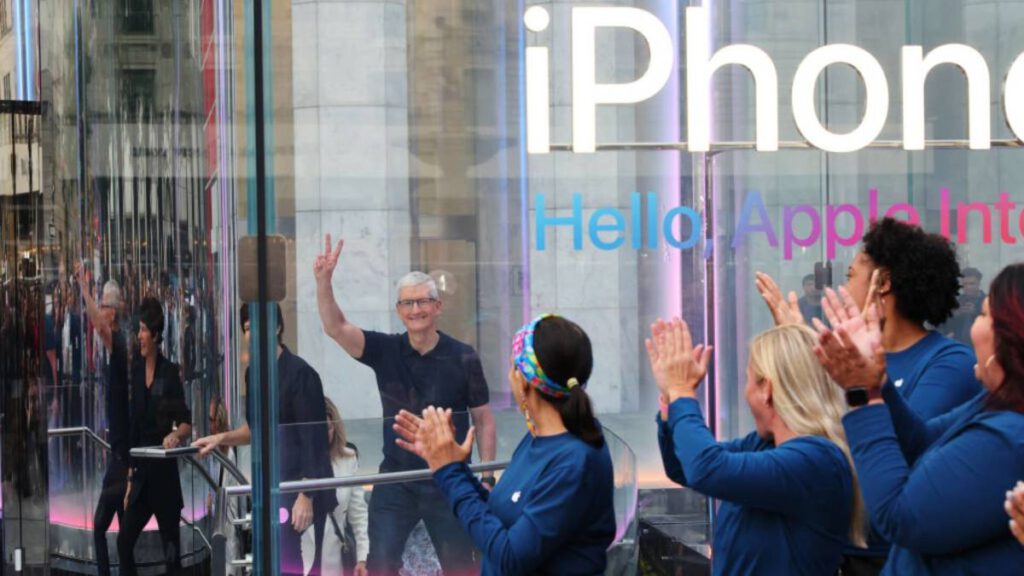A lot’s riding on the iPhone 17 for Apple (AAPL) , but to be fair, things feel a lot different.
Case in point is that Apple stock has climbed 5% this past week ahead of the release, outpacing the S&P 500’s 1.2% gain over the same period.
The base iPhone 17 model now inherits headline features, including a 6.3-inch ProMotion display (120Hz), 256GB at entry, a new Center Stage front camera, Ceramic Shield 2, along with a powerful A19 chip. Apple’s CEO Tim Cook hails it as “best iPhone lineup ever,” and “the biggest leap ever for iPhone.”
Unsurprisingly, Wall Street’s heavyweights are leaning in.
💵💰Don’t miss the move: Subscribe to TheStreet’s free daily newsletter💰💵
Wedbush’s Dan Ives says iPhone 17 “sets up a super cycle” while pegging a whopping 315 million of Apple’s 1.5 billion iPhone users as four-plus years into their devices. Gene Munster goes a step further in calling it “the biggest iPhone upgrade cycle in over a decade”.
Early demand backs it up, with J.P. Morgan boosting its Apple target while modelling 236 million iPhone units in FY26, underscoring a healthier replacement wave. Though it’s mostly a modest 2% lift from its FY25 estimate, it’s still a far better outcome than Wall Street anticipated.
Yet behind all that fanfare, Apple reportedly made a subtle change around launch weekend, a quiet move with massive long-term implications for model mix, margins, and how this cycle progresses.
Image source: Santiago/Getty Images
Apple quietly leans into base model demand
The Information just reported on a telling move from Apple, where the company has asked two of its key suppliers to ramp up production of the entry-level iPhone 17, signaling stronger-than-expected demand for the base model.
One of those suppliers, Luxshare Precision, was reportedly asked to raise its daily output by roughly 40%, while another supplier was told to boost production levels by at least 30%. The production boost is aimed at the $799 base iPhone 17, and not at the higher-margin Pro models, which marks a meaningful shift.
Related: Moody’s stuns with urgent call on Oracle’s future
There are two clear takeaways here for investors.
First, volume growth could potentially beat Wall Street’s expectations. Analysts like Gene Munster and Dan Ives have flagged the potential for a larger-than-usual upgrade cycle.
Secondly, the margin mix could get trickier. The base model carries lower gross margins compared to its Pro siblings. A sales skew toward its lower-priced units will weigh down average selling prices (ASPs) and profit per unit, even with the sales volume increase.
More News:
- Jim Cramer flips the playbook on the S&P 500
- Qualcomm just made a massive leap into Tesla’s turf
- Cathie Wood goes biotech shopping, shells out $7.7 million
Nevertheless, the move highlights that Apple is responding nimbly to where demand is the healthiest, and that’s apparently a constructive signal for the iPhone 17 cycle, despite some margin noise in the background.
Global shake-up: base iPhone vs. Android value
Apple’s looking to budge its suppliers to ramp up base iPhone 17 output, and it’s meeting demand where the growth is at this time (price-sensitive buyers wanting flagship-level features).
Related: Nvidia spending billions to spread its AI dominance
That essentially blurs the line between “value Android” and “entry iPhone,” just as demand for the iPhone 17 holds up into the launch weekend. That said, here are some key points to consider:
- Unit race: Apple 46.4 million shipments versus Samsung’s 58 million in Q2, which shows a tighter spread if base iPhone wins share in upgrades.
- Premium dominance: Apple is at 62% of premium sales in the first half of 2025, while Samsung is at 20%. A stronger base iPhone could potentially funnel users into Apple’s premium/services stack.
- China pulse: Record preorders have been reported with launch-day queues in Beijing, reinforcing demand durability (critical in Apple’s toughest market).
- Noise to watch: Viral scratch complaints have hit Pro/Pro Max on Chinese social media. So far, it’s a sideshow, but it’s important to track for spillovers
- Macro frame: 2025 phone market growth is at 1% but Apple could outgrow the industry if base demand sustains into the holidays.
Hence, it’s clear that Apple’s base-first momentum is a direct attack on Android’s value tier. If it sticks, Samsung/China OEMs may want to lean harder on specs, or cut prices to keep pace, while investors monitor ASPs vs. units.
Related: Jim Cramer drops shock call on Magnificent 7 stocks




